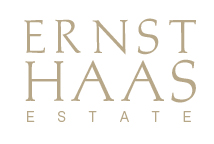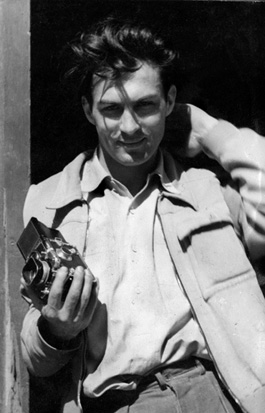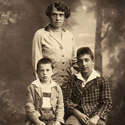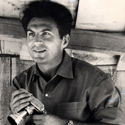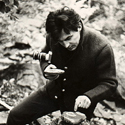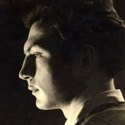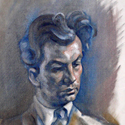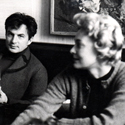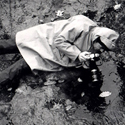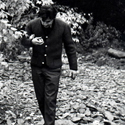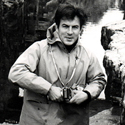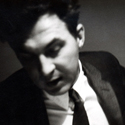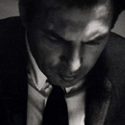Chronology
1921
Born on March 2 in Vienna, Austria, second son of Frederika
and Ernst Haas, a high official in the Austrian government.
His mother, inspired by the arts, encourages him from early
childhood to pursue creative endeavors. She maintains a
lifelong correspondence with him, mainly about the artistic
and aesthetic aspects of life. His older brother and best friend
Fritz is supportive and sympathetic.
1935–1939
Attends high school at the LEH Grinzing in Vienna from 1935
to 1938, when it is closed due to invasion of Austria by
Germany. Receives diploma from the Rainier Gymnasium,
Vienna, 1939.
1940
Father dies. Begins printing from old family
negatives. Studies medicine but is prohibited
from continuing due to Jewish ancestry.
1941
Enters the Graphische Lehr und Versuchsanstalt (Graphic Arts
Institute) in Vienna to study photography but leaves after one
semester. Shoots still photographs for the Reinhardt film seminar
in Berlin.
1943–1945
Works on and off in a photographic studio in Vienna. Makes his
first abstract photographs. Teaches photography at the American
Red Cross. In their library he discovers The Post’s Camera, edited
by Bryan Holme, which influences him on poetry in photography.
In this book he sees photographs by Edward Weston, whose
ability to transform an object from the real to the surreal profoundly
affects him.
1946
Acquires his first camera, a Rolleiflex, on the black market with
10 kilograms of margarine received for his 25th birthday.
Travels to Switzerland to meet Alfred Kubler, editor of DU magazine,
where he is exposed to the photography of Werner Bischof.
Bischof later becomes a close friend and associate at Magnum.
1947
Shows photographs of Vienna during the war in a group
exhibition at the American Red Cross headquarters in Vienna.
They are seen be Warren Trabant, editor of Heute.
1949
Begins working for Heute with correspondent Inge Morath.
First feature article on Viennese homecoming prisoners is
published in Heute and later picked up by LIFE. On the basis
of this story, Wilson Hicks, picture editor of LIFE, offers him
a job as staff photographer, which he declines. At the invitation
of Robert Capa he joins Magnum, which he believes will
offer him independence as a photographer. Also becomes a
shareholder in Magnum. During this time he develops close
associations with Capa, Bischof, and Henri Cartier-Bresson.
Capa encourages him to pursue his own vision. Begins
shooting with a Leica, experimenting with the first color films.
1951
Marries the Countess Antoinette Wenckheim. Visits the United
States for the first time on assignment from Robert Capa.
Appointed vice-president of Magnum’s American operations.
1952
Hitchhikes throughout New Mexico working on "Land of
Enchantment" for LIFE, inspired by his childhood fascination
with the Southwest and American Indians.
1953
LIFE publishes its first major color essay “Images of a Magic
City” (New York). Travels to Asia to cover the Vietnam war.
Free-lance stories included in LIFE, LOOK, Vogue, and Holiday.
1953–1954
In his personal letters begins to question photojournalism
assignments, the conflict between editors and photographers,
and what he hopes to achieve in life.
